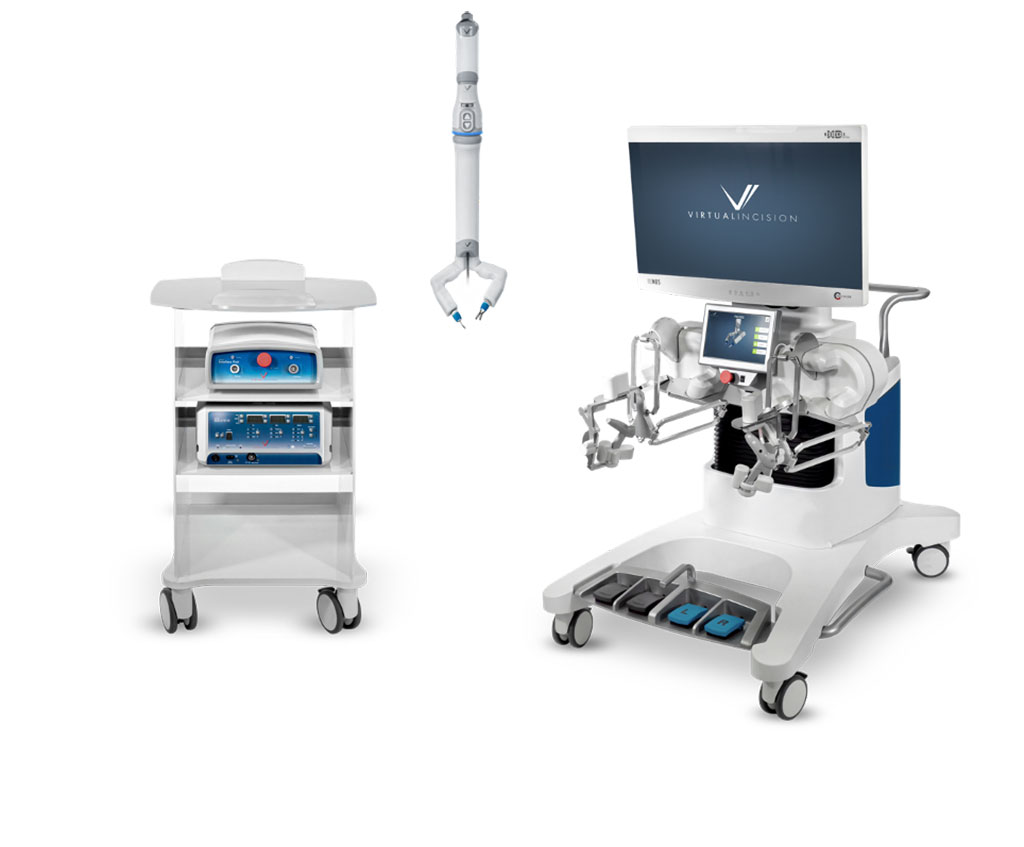Mini-Robot System Augments Laparoscopic Procedures
By HospiMedica International staff writers
Posted on 06 Jan 2022
A miniature surgical robot enables complex multi-quadrant abdominal surgeries using existing minimally invasive tools and techniques familiar to surgeons.Posted on 06 Jan 2022
The Virtual Incision (Lincoln, NB, USA) MIRA platform is a small, self-contained surgical device that is inserted through a single midline umbilical incision in the patient’s abdomen. Two miniaturized arms with six degrees of freedom (including an open/close function of the tool) are triangulated with the system camera, which provides visual feedback to the surgeon console in Full HD (1080p / 60 Hz). The Camera also features an auto-track function so as to keep the working space in the field of view.

Image: The MIRA Companion Cart, mini-robot, and Surgeon Cart (Photo courtesy of Virtual Incision)
The Surgeon Console includes a large monitor showing the real-time video feed from the Camera, hand controllers, pedals, and an interactive touchscreen. Motion is controlled by left- and right-hand input devices that interface with the surgeon’s hands. The hand input devices include sensors to detect the presence of the user and provide haptic feedback to indicate workspace boundaries. It is also equipped with four foot pedals to control clutching, camera movements, and bipolar and monopolar electrocautery.
A wheeled Companion Cart contains system support equipment, and is also used as a staging area to set up the MIRA platform. It also holds the Interface Pod, which manages the system connections and the Camera. The electrosurgical unit is also housed on the Companion Cart. The entire system does not require a dedicated operating room or specialized infrastructure, and due to its small size, it can offer a cost-effective and accessible option for laparoscopic surgery.
“Because of its clear benefits for patients, the demand for robotically assisted surgery continues to increase, though challenges still inhibit broader adoption,” said John Murphy, president and CEO of Virtual Incision. “MIRA is intended to overcome these limitations, with a simple and cost-effective solution that offers the potential to bring minimally invasive laparoscopic surgery to many more patients.”
MIRA is designed primarily for colon resection procedures in patients with diverticulitis, Crohn’s disease, inflammatory bowel disease, colon cancer, and other diseases. Because of the complicated nature of these procedures, existing robotically assisted surgical devices are rarely used, and manual laparoscopic approaches are only used in one-third of cases due to their difficulty and complexity.
Related Links:
Virtual Incision














